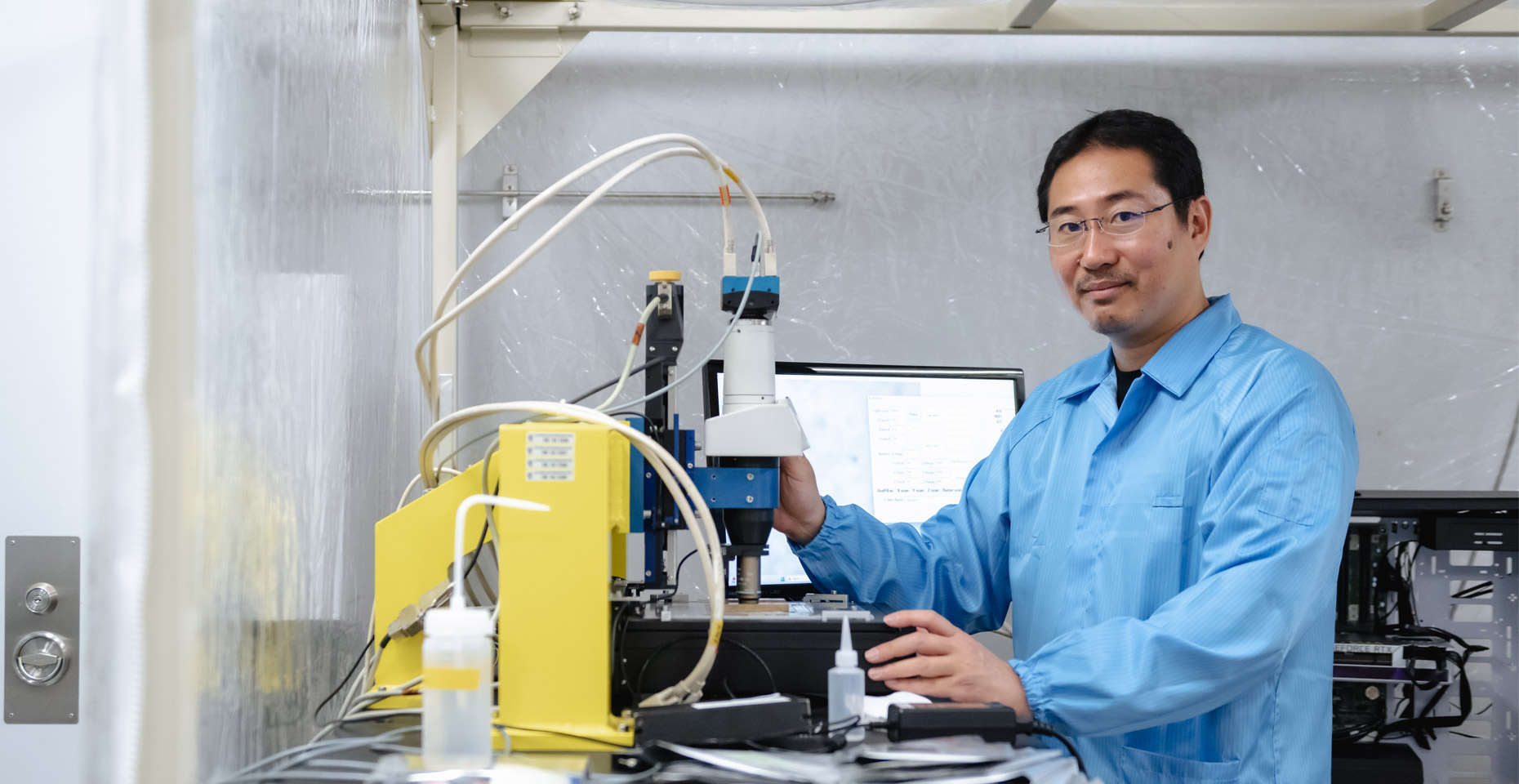Our universe still holds countless mysteries, and the pursuit of a ‘complete theory’ that fully describes its nature is a monumental endeavor. Associate Professor Akitaka Ariga, an experimental particle physicist at Chiba University’s Graduate School of Science, is on a mission to unravel challenges never before accomplished in human history.
Associate Professor Ariga has taken significant steps toward this goal through his groundbreaking research on elementary particles called ‘neutrinos.’ In 2023, he achieved a historic milestone by becoming the first to detect ‘neutrinos from a collider,’ a feat that redefined the frontiers of Particle Physics and earned him the Chiba University Award for Distinguished Researcher.
Despite a demanding schedule that includes spending half the year in Switzerland, Associate Professor Ariga passionately declared, with an unmistakable gleam in his eyes, that he aspires to pursue ‘research that only I can do.’ We spoke with him about his philosophy on research and education.
Tackling the mysteries of the universe through neutrinos
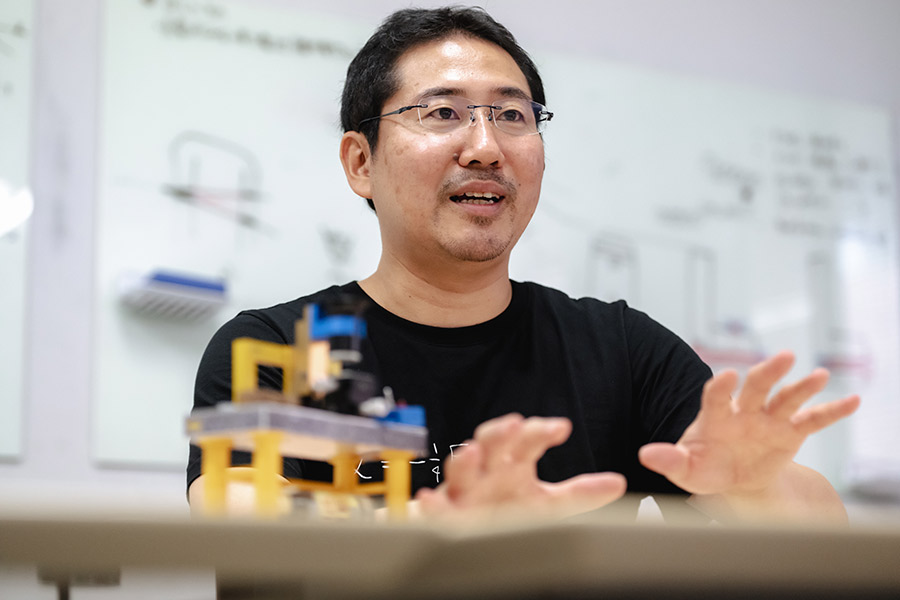
What are “neutrinos” that you are researching?
Neutrinos are a type of ‘elementary particle,’ the most fundamental element of matter. Often referred to as ‘ghost particles,’ they are incredibly elusive, interacting only weakly with other matter, making them extremely difficult to observe. Neutrinos are thought to hold key insights into the ‘mystery of matter creation in the universe,’ and researchers worldwide are conducting various experiments to uncover their enigmatic properties.
What inspired you to start researching neutrinos?
My journey into neutrino research began during my fourth year at Nagoya University when I joined a neutrino experiment lab. At the time, neutrino research was gaining immense attraction due to the completion of Super-Kamiokande, the world’s largest water Cherenkov cosmic particle observation facility, operated by the Institute for Cosmic Ray Research at the University of Tokyo. I was drawn to this field and decided to dive in, starting my research under Professor Kimio Niwa, a renowned neutrino researcher.
The first project I became involved with was called OPERA. This experiment aimed to observe ‘neutrino oscillations*’ by sending neutrinos from the European Organization for Nuclear Research (CERN), located on the Swiss-French border, 730km to Italy. My role was to develop the detector used in the project, and despite still being a student, I had the responsibility of leading the detector team.
*Neutrino oscillation: A phenomenon where neutrinos change into different types as they travel. This process is thought to be related to the fundamental mystery of how matter was created at the beginning of the universe.
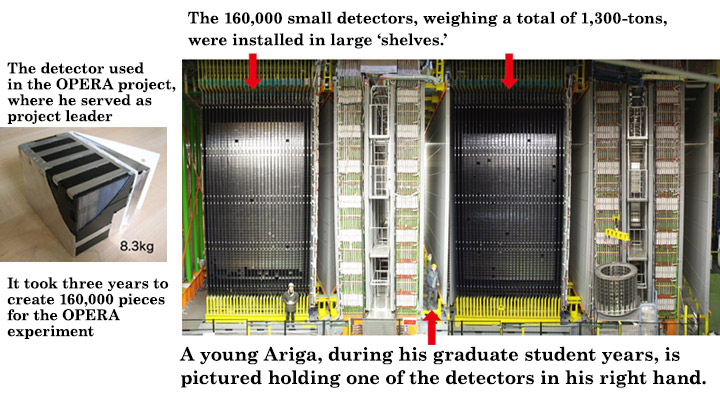
It’s amazing that, as a student, you were already leading such a major project!
Looking back, it was an unforgettable experience. The OPERA experiment was a success, and we were able to observe neutrino oscillations in ‘appearance mode’ for the first time in the world. This groundbreaking achievement contributed to Professor Takaaki Kajita being awarded the Nobel Prize in Physics in 2015.
Since then, I have participated in various neutrino experiments both in Japan and abroad. Today, I balance my role as an associate professor at Chiba University with my position as an assistant professor at the University of Bern in Switzerland. I commute between Japan and Switzerland every few months. It is a hectic schedule, but it’s also exhilarating.
For the first time in human history, high-energy neutrinos that are extremely challenging to observe have been detected.

I understand that you are currently involved in an international experiment called FASER. Could you explain what this experiment entails?
FASER is an experiment using the world’s most powerful proton-proton collider—the Large Hadron Collider (LHC) at CERN. This experiment involves capturing particles produced by high-energy proton collisions in the LHC positioned using a detector positioned in a tunnel 480 meters from the collision point. I am the leader of the FASERν project, which aims to detect neutrinos within the FASER experiment.
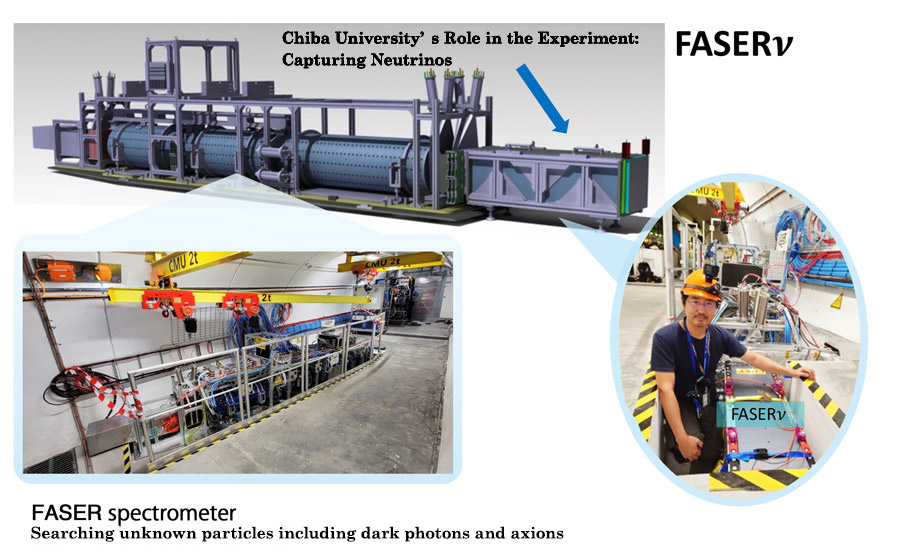
The LHC can create neutrinos with energy levels an order of magnitude higher than those examined in conventional experiments. This allows us to explore neutrino behavior in an unprecedented high-energy range, marking the first such investigation in the world. We anticipate that these efforts could lead to new insights into the nature of elementary particles.
What results are expected from this research?
Our goal is to contribute to the ‘Advancement of the Standard Model of Particle Physics.’ The Standard Model is a comprehensive theory.* This model, formalized in the mid-1970s, is often hailed as ‘the crowning achievement of 20th-century physics,’ successfully explaining countless experimental observations.
*A theory that describes the interactions among elementary particles: A theoretical system that encompasses the electromagnetic, weak, and strong forces, and even includes the Higgs boson,’ which imparts mass.

However, despite this success, the Standard Model falls short in addressing numerous cosmic mysteries.
According to the Standard Model, there are three types of neutrinos: 1) electron neutrinos, 2) muon neutrinos, and 3) tau neutrinos. They should all behave in the same manner. Yet recent predictions suggest that tau neutrinos may exhibit distinct properties. By investigating high-energy neutrinos with FASER, we aim to clarify potential differences among these neutrino types and pave the way for discoveries that challenge the limit of the Standard Model.
The FASERν experiment commenced in 2022, and in 2023, we achieved a world-first by detecting high-energy neutrinos in the TeV range*. This milestone was recognized with the Chiba University Award for Distinguished Researcher in 2023.
* The TeV range: Tera electron Volt scale, representing 1 tera electron volt, or 1 trillion electron volts. It is a unit of energy used to describe the energy possessed by elementary particles and ions. It is also called electron volts ‘eV’. One million electron volts is MeV.”

High-energy neutrino experiments using the LHC are truly groundbreaking! Then why hadn’t similar experiments been carried out before?
The primary challenge lies in the fact that, alongside high-energy neutrinos, the LHC produces a vast number of ‘nuisance’ particles. The prevailing belief was that conducting neutrino experiments in such a noisy environment would be impossible. To overturn this conventional wisdom, I first identified a location with minimal background noise. Next, I developed an advanced algorithm capable of identifying neutrinos amidst residual noise and designed a specialized detector capable of identifying elusive neutrinos in this complex environment.
This innovative detector, known as an ‘emulsion detector,’ comprises an emulsion film layered with tungsten. The emulsion film is embedded with numerous silver halide crystals, each measuring approximately 200 nanometers in size. This level of precision surpasses traditional detectors by a remarkable margin—up to 200 times greater than those employing other technologies, which typically achieve a resolution of around 10 micrometers (μm*).
*where 1μm equals 1/1,000 of 1 mm and 1 nm equals 1/1,000 of 1μm.
Our experiment has fundamentally transformed the LHC’s capabilities, enabling it to successfully detect high-energy neutrinos for the first time.

What are your future goals and experimental plans for this project?
FASERν will continue operations through 2025, allowing us to collect and analyze an extensive dataset. While we have already succeeded in observing high-energy neutrinos, this achievement stems from analyzing 1% of the data we anticipate gathering. By delving into the remaining 99%, we aim to unlock detailed insights into the characteristics and differences among the three types of neutrinos. This next phase of analysis makes the true beginning of an exciting era in neutrino research.
Looking further ahead, I am planning to build an advanced experimental facility capable of observing neutrinos with the statistics 200 times higher than those detectable by FASERν. This ambitious project reflects my commitment to advancing our understanding and pushing the boundaries of the Standard Model. It’s my life’s work!
Daring to blaze a unique path to singular discovery

What motto do you prioritize in conducting your research?
In my research, I strive to ‘conduct research that only I can do.’ Rather than simply being a part of large-scale collaborations with hundreds of researchers, I prefer to initiate original experiments that are uniquely possible with my own custom-designed detector. Over the years, I have launched numerous experimental projects in Japan and Switzerland.
Since my work often involves researchers from various countries, cultural differences can sometimes be challenging. However, I see this as a valuable opportunity to lead projects, learning to navigate and appreciate the diverse perspectives of each team member.
Wishing students to live their own lives

Is there anything you pay particular attention to when educating your students?
I prioritize staying connected with both Japanese and Swiss students. For example, I regularly meet with Japanese students remotely during my time in Switzerland to discuss their research progress and address any concerns. Although it is physically demanding, I am committed to providing a supportive educational environment for both groups of students.
I also make a conscious effort not to provide students with the ‘right answers.’ If I do, they won’t develop the critical thinking skills necessary for independent research. Of course, there are times when offering hints can help certain students grow, so I tailor my approach based on each individual’s personality and needs.
Finally, please share a message for students.
Whether you choose to enter society or remain in academia, I want you to find an area where you can say, “This is something only I can do!” Cultivate your own strengths and achieve things that are distinctly yours. By doing so, you will lead a life where you are the main actor, not just a cog in someone else’s machine. I wholeheartedly support all my students in living such a fulfilling and impactful life.

Recommend
-

Bringing Japan’s renowned experiment-based science education to Southeast Asia: Developing sustainable physics teaching materials for the pursuit of a disparity-free society
2023.11.24
-
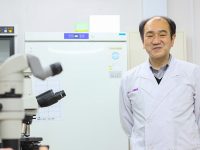
The World of Mold around Us: The A to Z of Mold
2023.04.06
-

Navigating the Society-driven Research: PPI and the Quest for Research Integrity
2025.02.27






